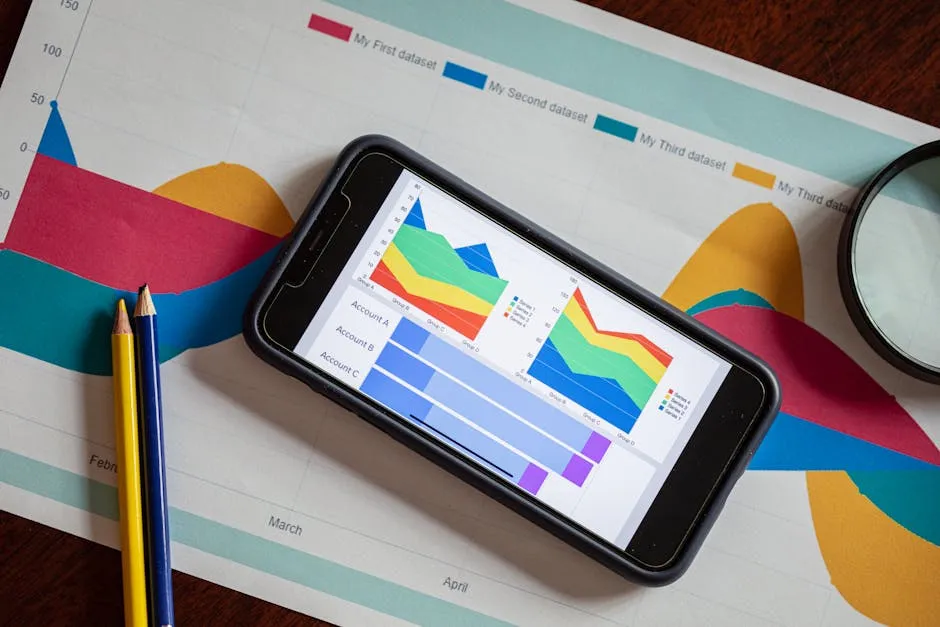Structure of the Z Table
Understanding the Z table is like cracking a code. At first glance, it may seem intimidating, but it’s actually quite simple. The table is organized into rows and columns. The rows represent the integer part and the first decimal place of the Z score. Meanwhile, the columns contain the second decimal place.
If you’re looking for the probability associated with a specific Z score, it’s all about the intersection. For example, to find the probability for a Z score of 1.23, you’d look for the row labeled “1.2” and the column labeled “0.03.” The value where they meet gives you the area under the curve up to that Z score. Voilà! You’ve just read a Z table.

Types of Z Tables
Z tables come in various flavors, each serving a unique purpose.
- Cumulative from Mean: This table shows the probability that a statistic lies between the mean and a specified Z score. For instance, if you want to find the area between 0 and 1.5, this is your go-to.
- Cumulative from Negative Infinity: This version provides probabilities for values below a given Z score. Want to know how likely it is to score less than 1.5? This table has your answer.
- Complementary Cumulative: This table calculates the probability that a statistic is greater than a specified Z score. If you’re curious about how many values exceed 1.5, this is the table to consult.
These variations make Z tables versatile tools in statistical analysis. And to keep your study space organized while you analyze, a Desk Organizer can be a lifesaver. No more rummaging through papers while you’re trying to find that elusive Z table!

How to Construct a Z Table
Creating a Z table from scratch might sound daunting, but it can be quite the fun exercise. Here’s a step-by-step guide:
- Define the Standard Normal Distribution: Remember, we’re looking at a distribution with a mean of 0 and a standard deviation of 1.
- Calculate Z Scores: Use the formula Z = (X – μ) / σ to compute Z scores for a range of values.
- Determine Probabilities: For each Z score, calculate the area under the normal curve up to that point. This can be done using statistical software or even numerical methods.
- Organize the Table: Structure your table with rows and columns as described earlier. Label the rows with the integer and first decimal of the Z scores, and the columns with the second decimal.
- Fill in the Values: Populate the cells with the corresponding probabilities for each Z score.
And there you have it! A custom-made Z table ready for use. It’s like baking your favorite cake, but for statistics. Now you can impress your friends with your Z table expertise!

How to Use the Z Score Table
Using a Z score table can seem as tricky as finding Waldo in a crowd. Fear not! With a few simple steps, you’ll be a Z score ninja in no time. Let’s break it down step-by-step.

Finding Probabilities
- Identify Your Z Score: First, calculate your Z score using the formula Z = (X – μ) / σ. Here, X is your data point, μ is the mean, and σ is the standard deviation.
- Locate the Z Score in the Table: Once you have your Z score, head to the Z table. The rows represent the integer part and the first decimal place, while the columns represent the second decimal place. For instance, if your Z score is 1.23, look for row 1.2 and column 0.03.
- Find the Probability: The value at the intersection of the row and column gives you the cumulative probability. This tells you the area under the curve to the left of your Z score. For example, if the value is 0.8907, it means there’s an 89.07% chance that a value is less than your data point.
- Calculate Areas to the Right: To find the area to the right, subtract the cumulative probability from 1. Using the previous example: 1 – 0.8907 = 0.1093. So, there’s a 10.93% chance that a value exceeds your Z score.
- Finding Areas Between Two Z Scores: If you need to find the area between two Z scores, simply find the cumulative probabilities for both Z scores and subtract the smaller from the larger. For instance, if Z1 = 0.5 (0.6915) and Z2 = 1.5 (0.9332), the area between them is 0.9332 – 0.6915 = 0.2417. This indicates a 24.17% chance of falling between the two scores.

Practical Examples
Let’s bring this to life with a few practical examples.
Example 1: Calculating the Probability of Scoring Below a Certain Value
Imagine you want to find the probability of a student scoring below 82 on a test, where the mean is 80 and the standard deviation is 5. First, calculate the Z score:
Z = (82 – 80) / 5 = 0.4
Looking up 0.4 in the Z table, you find a probability of 0.6554. So, there’s a 65.54% chance a student scores below 82.
Example 2: Finding the Probability of Scoring Above a Certain Value
What if you want to find the probability of scoring above 90? First, find the Z score:
Z = (90 – 80) / 5 = 2.0
From the Z table, the value for 2.0 is 0.9772. To find the probability above 90, calculate:
1 – 0.9772 = 0.0228
Thus, there’s a mere 2.28% chance of scoring above 90.
Example 3: Calculating Probabilities Between Two Scores
Let’s say you want to find the percentage of students scoring between 74 and 82. First, calculate Z scores:
For 74:
Z = (74 – 80) / 5 = -1.2
For 82:
Z = (82 – 80) / 5 = 0.4
Looking up both scores, you find:
– Probability for Z = -1.2 is 0.1151
– Probability for Z = 0.4 is 0.6554
Now, subtract the smaller probability from the larger:
0.6554 – 0.1151 = 0.5403
This means 54.03% of students scored between 74 and 82.

Common Mistakes to Avoid
- Misreading the Z Table: Always double-check the row and column you’re reading. Mixing them up can lead to incorrect probabilities. Remember, rows are for the first decimal and columns for the second!
- Confusing Cumulative and Complementary Probabilities: Cumulative probabilities show the area to the left of your Z score, while complementary probabilities show the area to the right. Be clear about which one you need for your calculations!
By understanding these steps and avoiding common mistakes, you’ll be ready to tackle any Z score challenge that comes your way. Happy calculating!

Applications of Z Scores and Tables
Real-World Scenarios
Education: Analyzing Test Scores
In the educational arena, Z scores are like the compass that guides teachers through the labyrinth of student performance. Imagine a classroom filled with eager minds, and each student takes a standardized test. The average score might be 75 with a standard deviation of 10. Now, if one student scores 90, the Z score tells us how they stack up against their peers.
With a Z score of 1.5, this student is not just above average; they’re soaring through the clouds! Teachers can use these scores to identify high achievers or those who may need extra help. The beauty is in the numbers. They provide clarity and context, transforming raw scores into a language everyone understands. And if you’re looking for a good read on educational statistics, check out Statistical Methods for the Social Sciences. It’s a fantastic resource for educators!

Business: Quality Control Testing
In the world of business, Z scores play a crucial role in quality control. Picture a factory producing widgets. The management wants to ensure that each widget meets specific standards. By measuring the weights of the widgets and calculating the Z score, they can determine how many fall outside the acceptable range.
If the average weight of the widgets is 500 grams with a standard deviation of 5 grams, a widget weighing 510 grams has a Z score of 2. This means it’s two standard deviations above the mean—definitely not your average widget! This information helps businesses make informed decisions about production quality and maintain customer satisfaction. If you’re interested in the tech side of data analysis, a Graphing Calculator (TI-84 Plus CE) can be a great addition to your toolkit!

Healthcare: Assessing Patient Data
In healthcare, Z scores are invaluable for assessing patient data. Consider a hospital that tracks patients’ blood pressure. If the average blood pressure reading is 120/80 mmHg with a standard deviation of 10, a reading of 140/90 mmHg can be converted into a Z score.
This Z score alerts healthcare professionals if a patient is at risk. By analyzing Z scores, doctors can identify trends and anomalies in patient data, leading to early interventions and better health outcomes. It’s like having a crystal ball that reveals the health status of patients at a glance. For those interested in a deeper dive into healthcare statistics, a great resource is The Art of Statistics: Learning from Data. It provides excellent insights into data interpretation!

Z Score in Research
Importance in Research Studies
In the realm of research, Z scores are the unsung heroes that help validate hypotheses. Researchers often gather data from samples to make inferences about a larger population. Z scores come into play when determining if the findings are statistically significant.
For instance, if a researcher finds a treatment effect with a Z score of 2.5, it suggests that the observed effect is quite unlikely to be due to random chance alone. This lends credibility to the research, allowing scientists to draw meaningful conclusions from their data. If you’re looking to enhance your research skills, the book Practical Statistics for Data Scientists is an excellent resource!

How Researchers Utilize Z Scores in Hypothesis Testing
When conducting hypothesis testing, researchers use Z scores to assess whether the null hypothesis can be rejected. They calculate a test statistic based on the sample data, which they then convert to a Z score.
If the Z score falls beyond a critical value in the Z table, it indicates a statistically significant result. This process transforms what could be a complex statistical analysis into a straightforward decision-making tool. Researchers can confidently declare their findings and contribute valuable insights to their field.
In summary, Z scores and their tables are not just numbers; they are tools that empower educators, business leaders, healthcare professionals, and researchers alike. With their ability to simplify data interpretation, Z scores stand at the forefront of analytical applications across various domains. Whether it’s identifying student performance, ensuring product quality, or validating research findings, Z scores are the unsung champions of statistical analysis.

Conclusion
Mastering the Z score table is an essential skill for anyone dealing with data. It’s not merely a statistical exercise—it’s a gateway to deeper insights and informed decision-making. By understanding how to calculate Z scores and interpret the Z table, you can confidently tackle various statistical challenges.
In many fields, professionals rely on Z scores for critical analysis. Whether you’re in education, psychology, healthcare, or business, Z scores provide clarity and precision. They allow you to compare data points effectively, identify trends, and assess probabilities. When you convert raw scores into Z scores, you gain a standardized view of your data. This standardization is invaluable for making comparisons across different datasets.
Imagine being in a meeting where data is being discussed. With your newfound knowledge of Z scores, you can contribute meaningfully. You’ll be able to highlight significant insights and guide discussions based on statistical evidence. This skill not only enhances your analytical capabilities but also positions you as a valuable team member.
Additionally, the Z score table serves as a handy reference tool. It helps you quickly find probabilities associated with the standard normal distribution. This quick access can save you time and help you make timely decisions. In situations where every second counts, having the Z table at your fingertips can be a game changer.
In summary, the knowledge gained from this guide equips you with the tools to navigate the world of statistics with confidence. You’ll be ready to interpret data, conduct analyses, and make informed decisions. So, embrace the Z score table as a trusted ally in your analytical journey. With practice, you’ll become a master of the Z score, transforming complex data into actionable insights.
FAQs
What is the difference between a Z score and a raw score?
A Z score is a standardized score that indicates how far a data point is from the mean in terms of standard deviations. For example, if a student scores a raw score of 85 on a test with a mean of 75 and a standard deviation of 5, the Z score is calculated as follows: Z = (X – μ) / σ = (85 – 75) / 5 = 2.0. This means the student’s score is 2 standard deviations above the mean. In contrast, a raw score is the actual score obtained on a test or measurement without any standardization.
How can I calculate a Z score?
To calculate a Z score, you can use the formula: Z = (X – μ) / σ, where X is the raw score, μ is the population mean, and σ is the population standard deviation. For instance, if you have a raw score of 90, with a mean of 80 and a standard deviation of 10, the calculation would be: Z = (90 – 80) / 10 = 1.0. This indicates that the raw score is 1 standard deviation above the mean.
What if my data doesn’t follow a normal distribution?
When your data does not follow a normal distribution, calculating Z scores may not be appropriate. However, you can use alternative methods like non-parametric tests or transform your data using techniques such as logarithmic or square root transformations. These methods help in stabilizing variance and making the data more normal-like.
Where can I find Z tables?
You can find Z tables in various resources, including textbooks, online calculators, and educational websites. Some popular online resources include Wikipedia’s standard normal table and dedicated sites like ztable.io. Most statistics textbooks also include Z tables in their appendices.
Is the Z score table the same for all normal distributions?
Yes, the Z score table is universal for all normal distributions. The Z table represents the standard normal distribution, which has a mean of 0 and a standard deviation of 1. Once you convert any normal distribution to a standard normal distribution using Z scores, you can use the same Z table to find probabilities regardless of the original distribution’s parameters.
Please let us know what you think about our content by leaving a comment down below!
Thank you for reading till here 🙂
All images from Pexels
Introduction
In the world of statistics, the Z score table is like a magic cheat sheet that transforms complex data into easily digestible probabilities. Whether you’re a student trying to ace your statistics exam or a professional diving into data analysis, the Z score table is your trusty sidekick.
Data analysis is crucial for interpreting statistical findings effectively. Tips for effective data analysis in economics and statistics can guide you through the process.
So, what exactly is a Z score? It’s a numerical representation of how many standard deviations a data point is from the mean. Imagine you’re at a party, and everyone is dancing. The Z score lets you know whether you’re busting a move or just standing awkwardly in the corner.
This guide will unpack the mysteries behind Z scores and explain the anatomy of the Z table. We’ll also walk you through practical examples that make you the Z score wizard in your circle.
Let’s kick things off by examining the Z table itself. This table contains statistical values that help you find the probability of a statistic being observed below, above, or between values on the standard normal distribution. Since probability tables can’t be printed for every normal distribution, it’s a common practice to convert a normal distribution to a standard normal distribution (a.k.a. Z score) and then use the Z table to find probabilities.
With a sprinkle of curiosity and a dash of humor, we’ll make sure you grasp these concepts without feeling overwhelmed. By the end of this guide, you’ll be ready to transform your statistical skills from zero to hero!

Summary
The Z score table, also known as the standard normal table, is essential for finding probabilities associated with the standard normal distribution. This article will explore the importance of Z scores, the structure and reading of Z tables, and their applications in various fields. We will cover how to calculate Z scores, interpret cumulative probabilities, and navigate different types of Z tables, including cumulative from the mean and complementary cumulative.
Additionally, practical examples will demonstrate how to use the Z table in real-world scenarios, making this guide not just informative but also practical. Whether you’re calculating probabilities for a normal distribution or conducting hypothesis tests, understanding the Z score table is a crucial skill in your statistical toolkit.
Hypothesis testing is a fundamental aspect of statistics that helps researchers draw conclusions from their data. Learn more about it in our statistics hypothesis testing cheat sheet.
So, buckle up! We’re about to dive into the nitty-gritty of Z scores and their tables. You’ll learn how to read them, how to calculate Z scores, and see firsthand how they can be applied in various real-life situations. By the end of this journey, you won’t just understand Z scores—you’ll wield them like a statistical superhero!

Importance of Z Scores in Statistics
Z scores are the unsung heroes of statistics. They play a pivotal role in hypothesis testing. When researchers want to determine if their findings are statistically significant, Z scores help them decide. They provide a way to calculate how far away a sample mean is from the population mean. This is crucial for making informed conclusions.
But wait, there’s more! Z scores aren’t just for the lab coat-wearing scientists. They find their place in diverse fields. In psychology, Z scores help analyze test scores. Teachers use them to compare student performance across different assessments. Even in quality control, businesses employ Z scores to maintain product standards. Who knew numbers could have such a versatile résumé?
Now, let’s talk about data analysis. Z scores simplify the process. They transform raw data into a standardized format. This means you can compare different data sets with ease. No more head-scratching math—just straightforward scores. This standardization is what makes Z scores a go-to tool for statisticians and data enthusiasts alike.
If you’re looking to dive deeper into statistical concepts, consider picking up a copy of Statistics for Dummies. This book breaks down statistics into bite-sized pieces, making it perfect for beginners or those who want a refresher. You’ll be saying “Z score” without a hitch in no time!

Anatomy of the Z Score Table
Structure of the Z Table
Understanding the Z table is like cracking a code. At first glance, it may seem intimidating, but it’s actually quite simple. The table is organized into rows and columns. The rows represent the integer part and the first decimal place of the Z score. Meanwhile, the columns contain the second decimal place.
If you’re looking for the probability associated with a specific Z score, it’s all about the intersection. For example, to find the probability for a Z score of 1.23, you’d look for the row labeled “1.2” and the column labeled “0.03.” The value where they meet gives you the area under the curve up to that Z score. Voilà! You’ve just read a Z table.

Types of Z Tables
Z tables come in various flavors, each serving a unique purpose.
- Cumulative from Mean: This table shows the probability that a statistic lies between the mean and a specified Z score. For instance, if you want to find the area between 0 and 1.5, this is your go-to.
- Cumulative from Negative Infinity: This version provides probabilities for values below a given Z score. Want to know how likely it is to score less than 1.5? This table has your answer.
- Complementary Cumulative: This table calculates the probability that a statistic is greater than a specified Z score. If you’re curious about how many values exceed 1.5, this is the table to consult.
These variations make Z tables versatile tools in statistical analysis. And to keep your study space organized while you analyze, a Desk Organizer can be a lifesaver. No more rummaging through papers while you’re trying to find that elusive Z table!

How to Construct a Z Table
Creating a Z table from scratch might sound daunting, but it can be quite the fun exercise. Here’s a step-by-step guide:
- Define the Standard Normal Distribution: Remember, we’re looking at a distribution with a mean of 0 and a standard deviation of 1.
- Calculate Z Scores: Use the formula Z = (X – μ) / σ to compute Z scores for a range of values.
- Determine Probabilities: For each Z score, calculate the area under the normal curve up to that point. This can be done using statistical software or even numerical methods.
- Organize the Table: Structure your table with rows and columns as described earlier. Label the rows with the integer and first decimal of the Z scores, and the columns with the second decimal.
- Fill in the Values: Populate the cells with the corresponding probabilities for each Z score.
And there you have it! A custom-made Z table ready for use. It’s like baking your favorite cake, but for statistics. Now you can impress your friends with your Z table expertise!

How to Use the Z Score Table
Using a Z score table can seem as tricky as finding Waldo in a crowd. Fear not! With a few simple steps, you’ll be a Z score ninja in no time. Let’s break it down step-by-step.

Finding Probabilities
- Identify Your Z Score: First, calculate your Z score using the formula Z = (X – μ) / σ. Here, X is your data point, μ is the mean, and σ is the standard deviation.
- Locate the Z Score in the Table: Once you have your Z score, head to the Z table. The rows represent the integer part and the first decimal place, while the columns represent the second decimal place. For instance, if your Z score is 1.23, look for row 1.2 and column 0.03.
- Find the Probability: The value at the intersection of the row and column gives you the cumulative probability. This tells you the area under the curve to the left of your Z score. For example, if the value is 0.8907, it means there’s an 89.07% chance that a value is less than your data point.
- Calculate Areas to the Right: To find the area to the right, subtract the cumulative probability from 1. Using the previous example: 1 – 0.8907 = 0.1093. So, there’s a 10.93% chance that a value exceeds your Z score.
- Finding Areas Between Two Z Scores: If you need to find the area between two Z scores, simply find the cumulative probabilities for both Z scores and subtract the smaller from the larger. For instance, if Z1 = 0.5 (0.6915) and Z2 = 1.5 (0.9332), the area between them is 0.9332 – 0.6915 = 0.2417. This indicates a 24.17% chance of falling between the two scores.

Practical Examples
Let’s bring this to life with a few practical examples.
Example 1: Calculating the Probability of Scoring Below a Certain Value
Imagine you want to find the probability of a student scoring below 82 on a test, where the mean is 80 and the standard deviation is 5. First, calculate the Z score:
Z = (82 – 80) / 5 = 0.4
Looking up 0.4 in the Z table, you find a probability of 0.6554. So, there’s a 65.54% chance a student scores below 82.
Example 2: Finding the Probability of Scoring Above a Certain Value
What if you want to find the probability of scoring above 90? First, find the Z score:
Z = (90 – 80) / 5 = 2.0
From the Z table, the value for 2.0 is 0.9772. To find the probability above 90, calculate:
1 – 0.9772 = 0.0228
Thus, there’s a mere 2.28% chance of scoring above 90.
Example 3: Calculating Probabilities Between Two Scores
Let’s say you want to find the percentage of students scoring between 74 and 82. First, calculate Z scores:
For 74:
Z = (74 – 80) / 5 = -1.2
For 82:
Z = (82 – 80) / 5 = 0.4
Looking up both scores, you find:
– Probability for Z = -1.2 is 0.1151
– Probability for Z = 0.4 is 0.6554
Now, subtract the smaller probability from the larger:
0.6554 – 0.1151 = 0.5403
This means 54.03% of students scored between 74 and 82.

Common Mistakes to Avoid
- Misreading the Z Table: Always double-check the row and column you’re reading. Mixing them up can lead to incorrect probabilities. Remember, rows are for the first decimal and columns for the second!
- Confusing Cumulative and Complementary Probabilities: Cumulative probabilities show the area to the left of your Z score, while complementary probabilities show the area to the right. Be clear about which one you need for your calculations!
By understanding these steps and avoiding common mistakes, you’ll be ready to tackle any Z score challenge that comes your way. Happy calculating!

Applications of Z Scores and Tables
Real-World Scenarios
Education: Analyzing Test Scores
In the educational arena, Z scores are like the compass that guides teachers through the labyrinth of student performance. Imagine a classroom filled with eager minds, and each student takes a standardized test. The average score might be 75 with a standard deviation of 10. Now, if one student scores 90, the Z score tells us how they stack up against their peers.
With a Z score of 1.5, this student is not just above average; they’re soaring through the clouds! Teachers can use these scores to identify high achievers or those who may need extra help. The beauty is in the numbers. They provide clarity and context, transforming raw scores into a language everyone understands. And if you’re looking for a good read on educational statistics, check out Statistical Methods for the Social Sciences. It’s a fantastic resource for educators!

Business: Quality Control Testing
In the world of business, Z scores play a crucial role in quality control. Picture a factory producing widgets. The management wants to ensure that each widget meets specific standards. By measuring the weights of the widgets and calculating the Z score, they can determine how many fall outside the acceptable range.
If the average weight of the widgets is 500 grams with a standard deviation of 5 grams, a widget weighing 510 grams has a Z score of 2. This means it’s two standard deviations above the mean—definitely not your average widget! This information helps businesses make informed decisions about production quality and maintain customer satisfaction. If you’re interested in the tech side of data analysis, a Graphing Calculator (TI-84 Plus CE) can be a great addition to your toolkit!

Healthcare: Assessing Patient Data
In healthcare, Z scores are invaluable for assessing patient data. Consider a hospital that tracks patients’ blood pressure. If the average blood pressure reading is 120/80 mmHg with a standard deviation of 10, a reading of 140/90 mmHg can be converted into a Z score.
This Z score alerts healthcare professionals if a patient is at risk. By analyzing Z scores, doctors can identify trends and anomalies in patient data, leading to early interventions and better health outcomes. It’s like having a crystal ball that reveals the health status of patients at a glance. For those interested in a deeper dive into healthcare statistics, a great resource is The Art of Statistics: Learning from Data. It provides excellent insights into data interpretation!

Z Score in Research
Importance in Research Studies
In the realm of research, Z scores are the unsung heroes that help validate hypotheses. Researchers often gather data from samples to make inferences about a larger population. Z scores come into play when determining if the findings are statistically significant.
For instance, if a researcher finds a treatment effect with a Z score of 2.5, it suggests that the observed effect is quite unlikely to be due to random chance alone. This lends credibility to the research, allowing scientists to draw meaningful conclusions from their data. If you’re looking to enhance your research skills, the book Practical Statistics for Data Scientists is an excellent resource!

How Researchers Utilize Z Scores in Hypothesis Testing
When conducting hypothesis testing, researchers use Z scores to assess whether the null hypothesis can be rejected. They calculate a test statistic based on the sample data, which they then convert to a Z score.
If the Z score falls beyond a critical value in the Z table, it indicates a statistically significant result. This process transforms what could be a complex statistical analysis into a straightforward decision-making tool. Researchers can confidently declare their findings and contribute valuable insights to their field.
In summary, Z scores and their tables are not just numbers; they are tools that empower educators, business leaders, healthcare professionals, and researchers alike. With their ability to simplify data interpretation, Z scores stand at the forefront of analytical applications across various domains. Whether it’s identifying student performance, ensuring product quality, or validating research findings, Z scores are the unsung champions of statistical analysis.

Conclusion
Mastering the Z score table is an essential skill for anyone dealing with data. It’s not merely a statistical exercise—it’s a gateway to deeper insights and informed decision-making. By understanding how to calculate Z scores and interpret the Z table, you can confidently tackle various statistical challenges.
In many fields, professionals rely on Z scores for critical analysis. Whether you’re in education, psychology, healthcare, or business, Z scores provide clarity and precision. They allow you to compare data points effectively, identify trends, and assess probabilities. When you convert raw scores into Z scores, you gain a standardized view of your data. This standardization is invaluable for making comparisons across different datasets.
Imagine being in a meeting where data is being discussed. With your newfound knowledge of Z scores, you can contribute meaningfully. You’ll be able to highlight significant insights and guide discussions based on statistical evidence. This skill not only enhances your analytical capabilities but also positions you as a valuable team member.
Additionally, the Z score table serves as a handy reference tool. It helps you quickly find probabilities associated with the standard normal distribution. This quick access can save you time and help you make timely decisions. In situations where every second counts, having the Z table at your fingertips can be a game changer.
In summary, the knowledge gained from this guide equips you with the tools to navigate the world of statistics with confidence. You’ll be ready to interpret data, conduct analyses, and make informed decisions. So, embrace the Z score table as a trusted ally in your analytical journey. With practice, you’ll become a master of the Z score, transforming complex data into actionable insights.
FAQs
Please let us know what you think about our content by leaving a comment down below!
Thank you for reading till here 🙂
All images from Pexels




